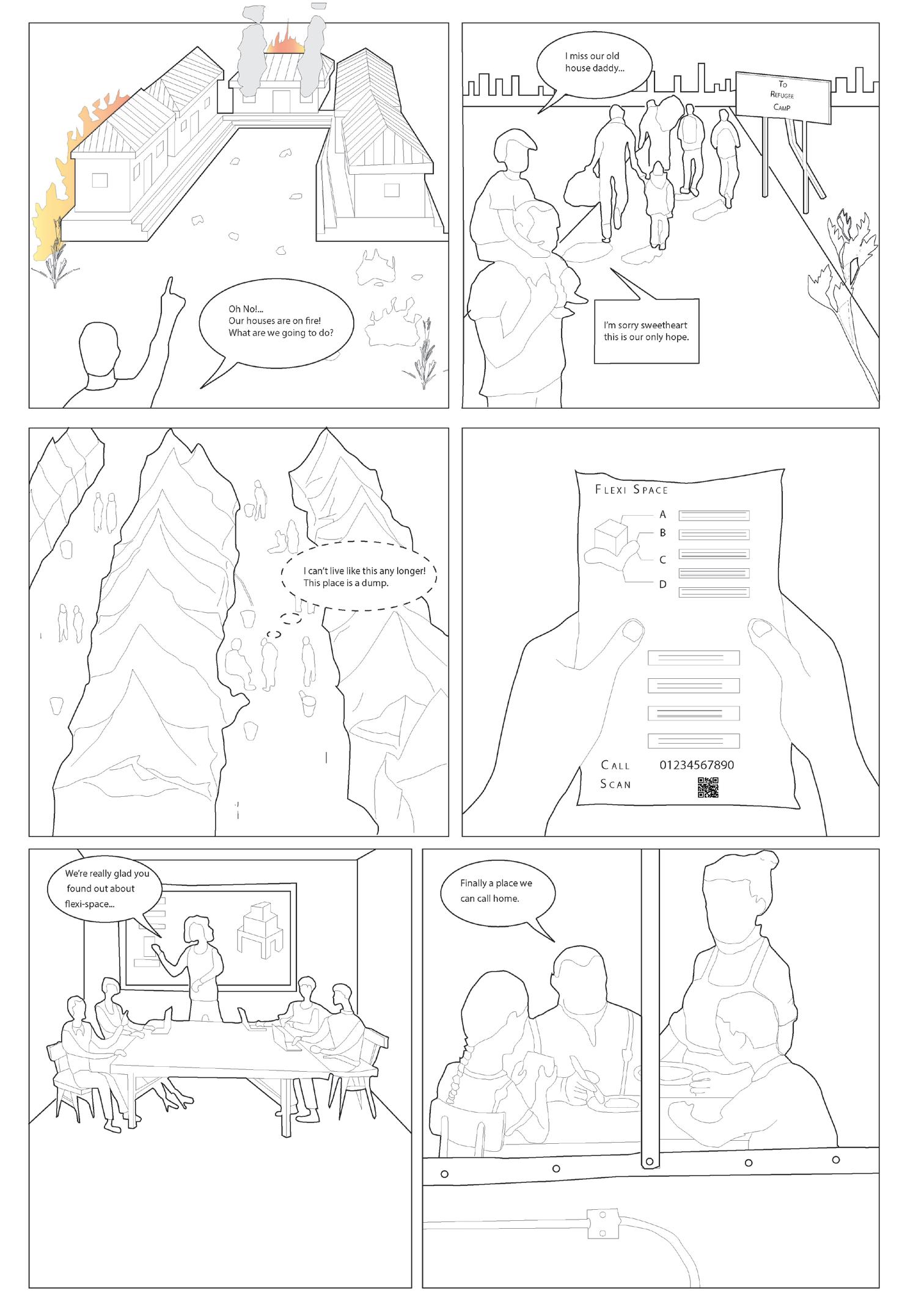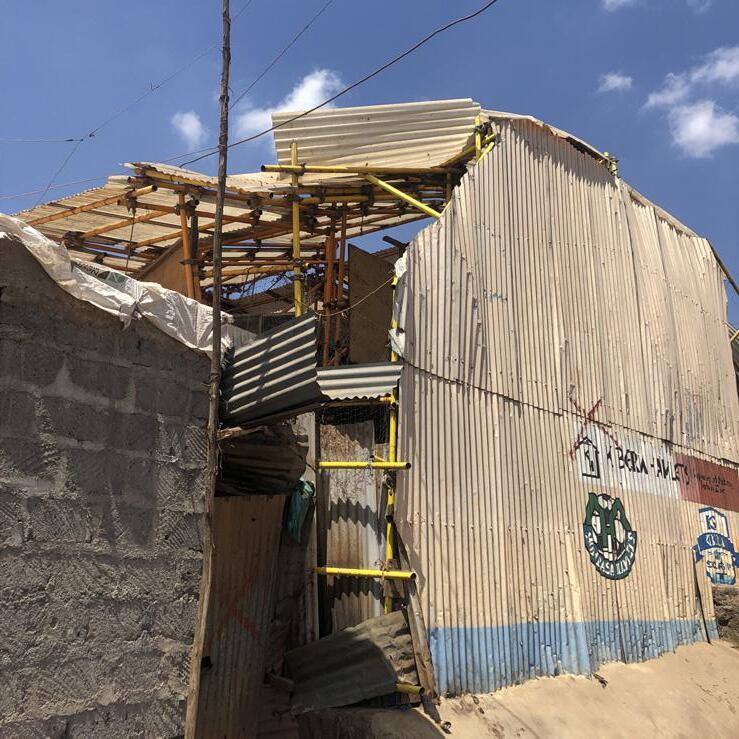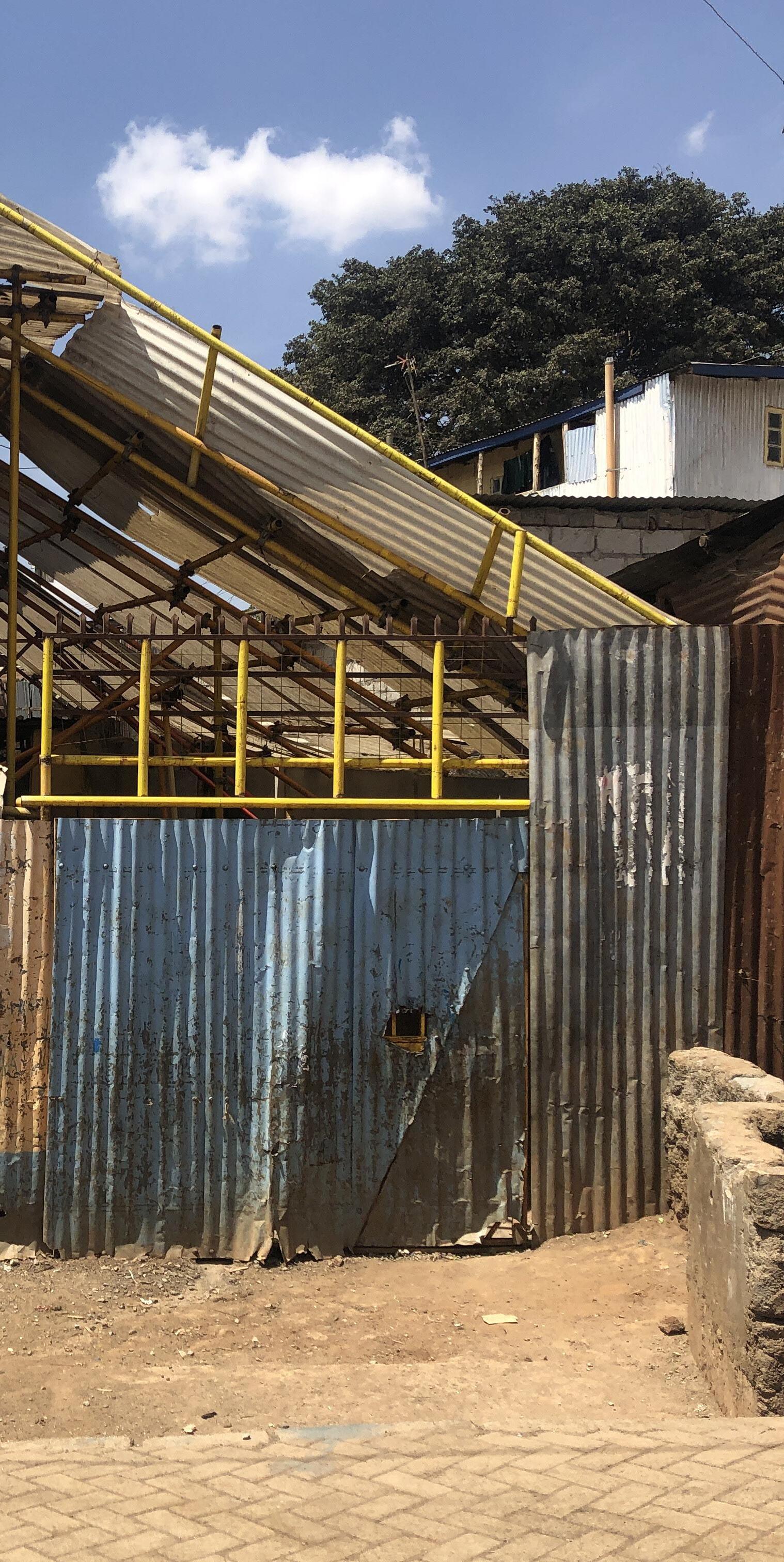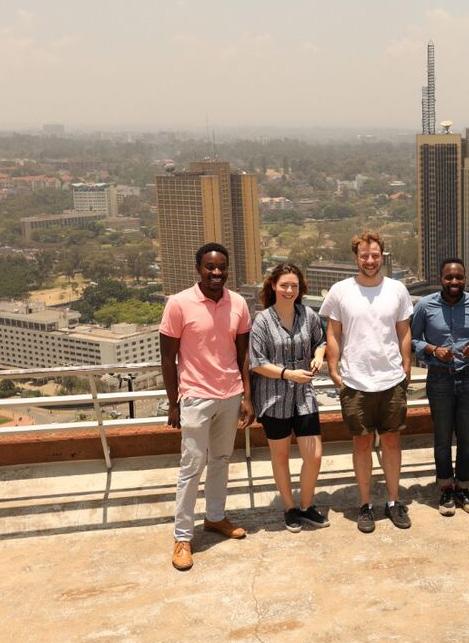Flexi Space
Housing Group :
Betty Mwema

Discipline - Service design
Hannah Weirich
Discipline- Product design

Discipline - Impact design

William Otuke
Discipline- Architecture


Housing Group :
Betty Mwema

Discipline - Service design
Hannah Weirich
Discipline- Product design

Discipline - Impact design

William Otuke
Discipline- Architecture

• 55,538,538 population
• 20,1 median age
• Nairobi is the most populous county with a population of 4,397,073
• Of the 2 million Kenyans without proper shelter, over 50% comprise of children
• Increasing population
• Increasingly expensive rents
• 83,783,942 population

• 47,8 median age
• Berlin is the most populous city with a population of 3,669,491

• 678,000 homeless people (2018)
• Increasingly expensive rents
• More and more people moving into the cities
• Increasing number of refugees in need of adequate housing.
Süddeutsche Zeitung am 22.12.2019
Architecture for homeless: “If you don‘t have an address, you‘re not part of the society”
Recent situations in Marburg suggest that homeless individuals are housed by the Municipality in the district of Waldtal, where any homeless individuals can apply to the municipality before acquiring access to the rented rooms. These rooms can only be allocated for a specific amount of time, which means that the occupants will need to find someplace else to stay, if not back on the streets.

Due to the limited number of individuals who can apply for these services (48), the concept of ‘Vinzidorf’ was established to allow homeless individuals to have ‘permanent shelters.

Austrian architect Alexander Hagner designed the Vinzidorf village found in Vienna, Austria and this led to interest from neighbouring Germany and the team led by Jurgen Rausch took on the idea of replicating this village in Marburg for the homeless.
The project is comprised of standardised prefabricated microhomes that are semi detached in nature and can be accessed individually by each user, with an area of 7.2m2

The microhomes are fully furnished with all the necessary amenities for each user to make use at a construction cost of for 24 of these homes for 1.5 million Euros compared to the regular price for rental blocks at 2.8 million Euros.

The user group in Marburg would be:
• Homeless individuals who cannot find a home by themselves or with the help from the municipality
• Individuals displaying social behavioural deficiencies.
Some challenges which may be faced during the implementation of this idea:
• Long-lasting homelessness
• Delinquency/ criminality.
• Refusal of help.
• Chronic diseases.
• Drug abuse.
• Extreme poverty.
• Eviction notices.

Image 01
Unprecedented site identified for the proposed structure.
Image 02
Site
The scenario storyboard conveys a young family, displaced by a natural occurrence, having to find and seek shelter from a refugee camp / other humanitarian aid camp.
Whilst at the camp they come across a little brochure that displays the housing concept idea that would be deployed for such people in need. The family then contacts us to inquire about the product, and this is the first experience the family would have with the ‘flexi-space structure’.
Image 03
Primary
Image 04
Like an IKEA kit of parts, the structure can be assembled in various site locations, however, to account for the unpredictable site location topographies, the structure is set up to sit above ground on stilts.
Image 05
Access
Image 06
Structure fully complete for sloping site.
The primary structure would incorporate timber/ or locally sourced lumber, which in turn would also allow the families to pick up construction skills that can be used at any point in their lives.
The rest of the structure can then be adjusted to fit each of the family’s needs although in this case the main basic functions of a good structure were incorporated, from ventilation, lighting, and drainage.
Image 07
Upon coming up with this concept, it was also realised that some areas might not be covered by land masses but water masses as well, therefore the ‘capsule’ idea came into play. The idea entails an inflatable capsule device that would be providing buoyancy for the structure to sit on.
Image 08
Floatation
The idea has yet to be tested through prototyping.

Question: Where do you sleep at night?
Answer: We stay in Kawangware (an area in Nairobi predominantly known for the dichotomy between low to medium income housing) at night, so we commute every day from morning to evening.
Question: Do you live with your parents?
Answer: Yes, we live together with our parents in Kawangware.
Question: What are the main challenges at home?
Answer: Mainly financial, we don’t have enough money for school fees and food.
Question: Is where you live/ stay at night safe?
Answer: Not always, but when we’re with our parents we always feel safe.
Question: What made you choose this area as your preferred location to hang around?
Answer: Our parents told us a lot of big cars come here to fuel and a lot of people also shop around here, so we thought it was a good place to try and get some money.
Question: If we were to help you, what would be the main thing you would require?
Answer: Our main problem is not having enough school fees, so we can’t go to school.
Question: Are your parents okay with you doing this?
Answer: Our parents don’t have anything, so we also need to help provide for the home otherwise some of us can also be chased away from home.
H: Let's start. First of all, perhaps you can tell me your names.
A: Alfred and that one over there is called Michel.
M: Like Michel from Lönneberga, very easy to remember.
A: Or Holzmichel!
H: Okay, thank you. I'll remember it. First question: Where do you usually sleep?
A: Outside!
H: Right here on the street or somewhere else?
M: I've only been here in Frankfurt since yesterday.
H: And? What do you think? How do you like it so far?
A: Everything here has become very different. In the last 20 years that I've known Frankfurt, a lot has changed.

H: Has it got worse or better?
A: Worse, much worse! They robbed me on Friday and it really pissed me off - excuse me for saying so. They stole my fanny pack with my money and everything important in it.
H: Damn, I'm sorry about that.
A: Yes, everything gone. ID and the rest. Now if a police check comes up and they ask me for my ID, I won't even have anything to show them.
H: When did this happen? While you were asleep?
A: Yes, exactly. But it is also very difficult in general. I got to know Frankfurt back then, when I was still really young, everything was different.
H: Unfortunately, I've heard that several times now, that it's only getting worse here.
M: You only have to go to the main station district - there at the main station, on Kaiserstraße - you can see everything. But I'll give you a good tip. Just don't go there at night.
H: Yes, we didn't intend to.
M: If you do, go during the day, because it wouldn't be safe at night. We don't want anything to happen to you.
H: Thanks, we'll be careful! Another question: Would you say that there is a big difference between living on the street as a man or as a woman?
M: Yes, my wife here (points to a woman sitting a few metres away) is always very scared.
H: Okay, so it probably makes sense to always be on the move together, doesn't it?
A: Well, I'm travelling alone now.
M: You are also a man!
A: I met this one (Michel) by chance. But otherwise I travel alone. I know how to defend myself. (points to his fist)
Kibera hamlets is a Kenyan legal Charity entity that is registered as a non-profit organisation.
The organisation depends mainly on volunteers and donations that are provided by private or individual parties, with the aim of providing resources for information and empowerment programmes that fosters the improvement of livelihoods of young children and youth currently living in the slums of Kibera, Nairobi.


The Kibera Hamlets organisation in Kenya set up the Hamlets school, which is located within the inner streets of Kibera of which was a transformational project for the region, providing for basic facilities for public usage.

The school started out its early years as a pavilion (The Louisiana Hamlet Pavilion), constructed out of recycled construction scaffolding components into a set of modular formations. The idea behind this is that the structure can be easily modified and reconfigured to allow for any future requirements.

 Street photographs in front of Hamlets school entrance gate.
Street photographs in front of Hamlets school entrance gate.



Deutches Design Museum
Foundation
German Design Council
Akinyi Adongo
Van Bo Le-Mentzel
Peter Kettner
Jacob W. Mwangi
Samuel Matonda
Michael Muiya
Skander Negasi
George-Christof Bertsch
Thomas Jager
Cedric Fettouche
Johannes Schaefer
Christian Labonte
Paul Schrijen
Jan C. Kuster
George Adulu
Julia Voigtlaender
Helge Aszmoneit
Nora Friedrichs-Karimi
Jurgen Rausch
Alexander Hagner
Christiane Eulig
Exploring the idea of housing will always be an expansive research arena, which is why we decided to look at this particular basic need within both contexts of Germany & Kenya as the preliminary test locations.
As designers we are often limited to the scope of field that we are presented with, due to the ideological, political & economic factors at play when iterating design functions.
We approached the topic with an open mind and investigated the situation of homelessness for both contexts and this curiosity is depicted within these pages as our attempt at devising ways we can try and curtail the situation for both contexts.
The process in this case becomes the subject matter as concrete solutions can then be developed further from these investigations.